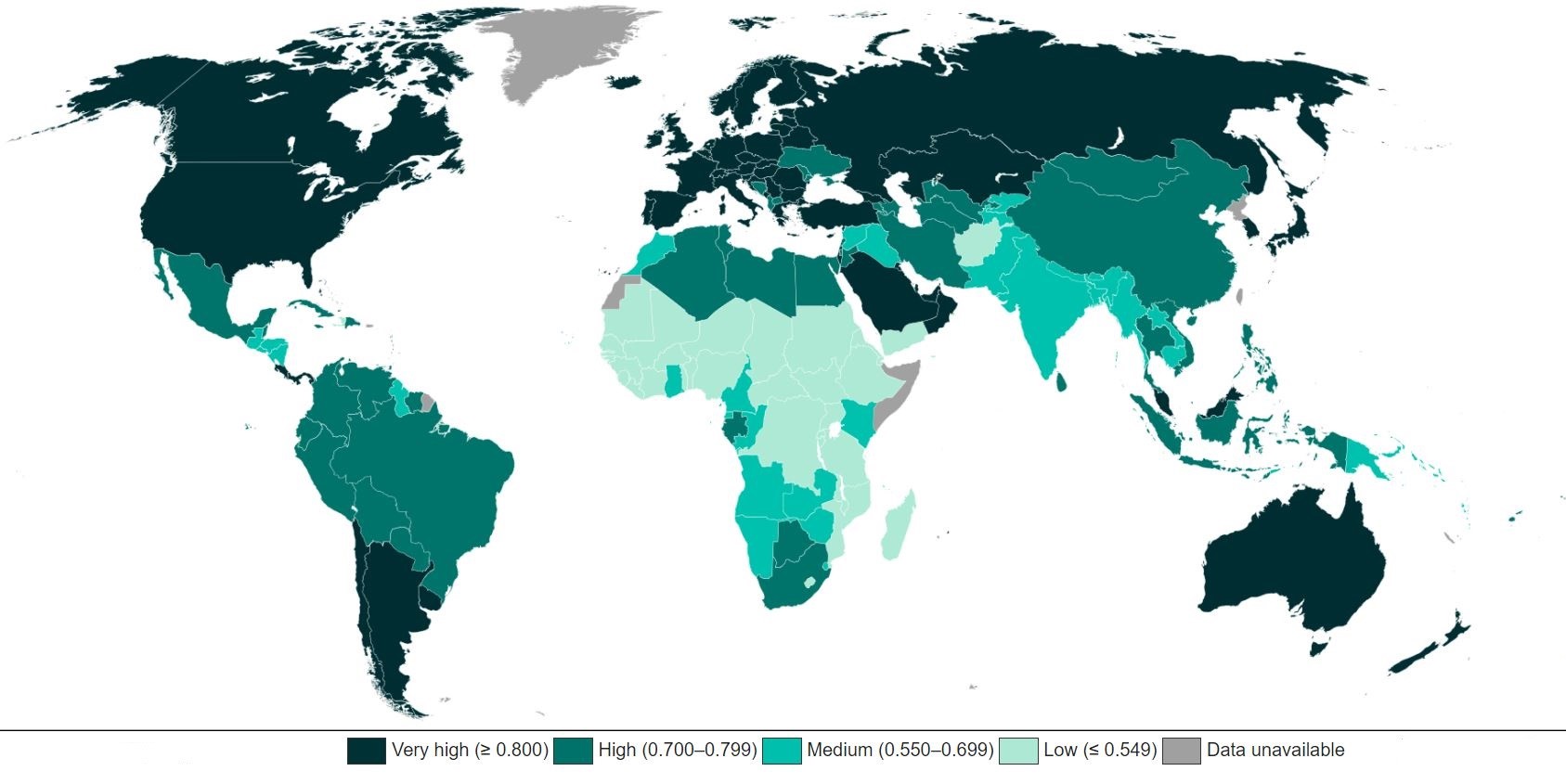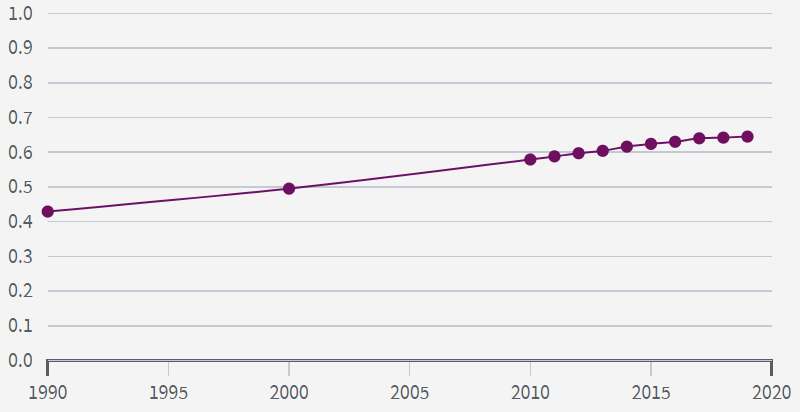Human Development Index
2020 DEC 21
Mains >
Social justice > Human Resources > Human Development Index

IN NEWS:
- India dropped two spots to 131 out of 189 countries on the Human Development Index (HDI) this year.
HUMAN DEVELOPMENT INDEX:
- Human Development Index (HDI) is a statistic composite index, developed by Pakistani economist Mahbub ul Haq. It is published annually by the United Nations Development Programme.
- It measures the average achievements in key dimensions of human development:
- A long and healthy life
- Being knowledgeable
- A decent standard of living

CATEGORIZATION:
- The HDI is the geometric mean of the normalized indices for each of the three dimensions. This index is used to calculate HDI score, which ranges from 0 to 1. This is then used to rank countries into four tiers of human development.
|
HDI
|
Category
|
Example
|
|
0.800 or greater
|
Very high human development
|
Norway, Ireland, Switzerland, Germany Sweden
|
|
0.700–0.799
|
High human development
|
Sri Lanka, Iran, Cuba, China, Egypt, Vietnam
|
|
0.550–0.699
|
Medium human development
|
India, Bangladesh, Pakistan, Bhutan
|
|
less than 0.550
|
Low human development
|
Afghanistan, Sudan, Mali, Niger
|
INDIA AND HDI:
- India’s HDI value for 2019 is 0.645 - which puts the country in the medium human development category and positioning it at 131 out of 189 countries and territories.
|
|
Rank
|
HDI Value
|
Life expectancy at birth
|
Expected years of schooling
|
Mean years of schooling
|
GNI per capita
|
|
India
|
131
|
0.645
|
69.7 years
|
12.2 years
|
6.5 years
|
$ 6,681
|
- Between 1990 and 2019, India’s HDI value increased from 0.429 to 0.645, an increase of 50.3 percent.

- However, India’s recent performance has been dismal:
- India’s gross national income per capita fell to $6,681 in 2019 from $6,829 in 2018 on a purchasing power parity basis.
- India figured in the bottom third for most development indicators, including quality of health and education and an adverse sex ratio.
- The country also ranked in the bottom third for a high percentage of people in vulnerable employment.
- India, however, figured in the top third grouping of countries with a lower unemployment rate and high representation of women in elected local governments.
SIGNIFICANCE OF HDI:
- Reoriented the idea of development: The HDI was created to emphasize that people and their capabilities should be the ultimate criteria for assessing the development of a country, not economic growth alone.
- Broader concept of well-being: HDI embodies Amartya Sen’s “capabilities” approach to understanding human well-being, which emphasizes the importance of ends (like a decent standard of living) over means (like income per capita).
- Tool for evaluation: The HDI can be used to question national policy choices, asking how two countries with the same level of GNI per capita can end up with different human development outcomes. These contrasts can stimulate debate about government policy priorities.
CRITICISM:
- Reductionist view: The HDI simplifies and captures only part of what human development entails. It does not reflect on inequalities, poverty, human security, empowerment, socio-economic and political freedom etc.
- Quantitative measurement: HDI ignores the qualitative measurement of life. Eg: HDI considers only the number of years of schooling, but not qualitative factors like teacher-pupil ratio; Health parameter does not consider gender disparities, child health etc.
- Conceals disparities: HDI values are averages that conceal wide disparities in overall population. Eg: Saudi Arabia has high per capita GDP and this puts it in the very high human development category. However, in Saudi Arabia there is greater inequality between men and women when considering access to education and political power.
- Neglects sustainability: HDI has neglected links to sustainability by failing to investigate the impact on the natural system of the activities that potentially contribute to national income and hence to HDI.
- Equal weight: In preparing HDI equal weight of 1/3 is given to each of the three variables. Since these three components of HDI are measured in different units, to give equal weight to each component of HDI does not make much sense.
- Trade-off between indicators: As countries could achieve the same HDI through different combinations of life expectancy and GNI per capita, the index portrays a flawed picture. Eg: Cuba is categorised as High human development country despite having low per capita income due to its excellent healthcare system.
- Better indicators are available: There are other composite indices that provide a more comprehensive picture on key issues of human development, inequality, gender disparity and poverty. Eg: Multidimensional poverty index.
CONCLUSION:
Its construction can be criticised in a number of ways, but the HDI remains an understandable and more comprehensive perspective on development. However, there is still room for improvement in the HDI, such as:
- Expansion of chosen criteria. Eg: Include unemployment levels in standard of living.
- Addition of inequity considerations. Eg: Incorporating gender equality by including fertility rates, or female share of the workforce.
- Integration of qualitative measures, like Gini coefficient and happiness index.
- Incorporation of sustainability concerns into the index.
PRACTICE QUESTION:
Q. What is Human Development Index (HDI)? Critically examine its success in reflecting the realities of the world?

